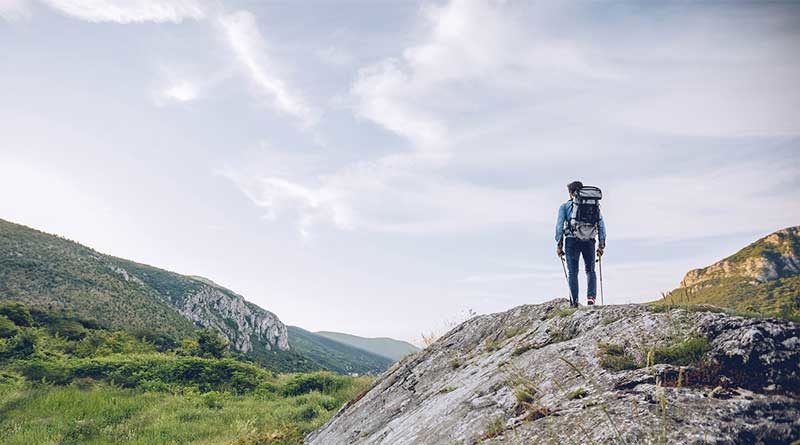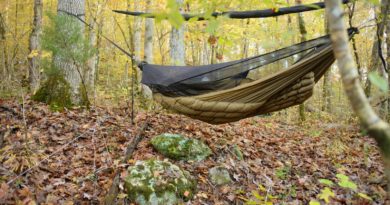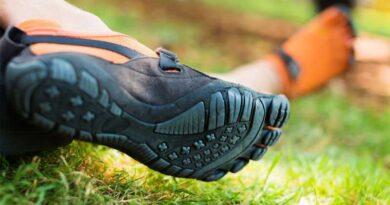What to Wear When Hiking In Spring?
Early spring nights can be cold in most states so proper layering is essential. Pay attention to clothing material because it plays a key role in keeping you warm. For example, cotton holds onto moisture and can leave you feeling sweaty in hot conditions, and when the weather changes, it just gets colder which can leave you feeling very cold. So avoid cotton and look for materials like polyester, nylon, or merino wool. These materials are a lot more moisture-wicking and keep you warm and comfortable.
When hiking in spring, you may come across mud, high-water crossing, snow, and unpredictable weather. To stay safe and comfortable, you need the following pieces of clothes in your backpack.
Base Layers
A base layer is a piece of clothing that comes in contact with your skin. It performs the function of wicking moisture and keeps your skin dry. You want your base layer to be made of moisture-wicking material so it can remove sweat from the skin and help it dry faster so that you don’t stay wet and sweaty. A good example is Patagonia Capilene Midweight Crew which is made of synthetic material, which is 100% recycled polyester. It’s warm, durable, and will last for many seasons.
Mid-layers
The next layer is going to be your mid-layer or the layers that add warmth. For this layer, something like a puffy jacket with synthetic fill or a polyester fleece would be great options. The general guide is to pack at least two mid-layers on a trip but again, that should be adjusted for your particular hike. Depending on where you are at the time of year, you might need to consider warmer layers for your legs as well.
For my mid-layers, I have a Patagonia fleece jacket and I wear it all the time. It’s great because you can have it in your backpack or you can hike with it depending on the temperature. I also have my pink puffy jacket and I absolutely love it. It’s the Patagonia Nano Puff jacket and it is pretty small and lightweight for the warmth that it provides. A synthetic fill which means if it does happen to get a little bit wet, it’s still going to be insulating. Whereas a down jacket, if that gets wet, is no longer helpful.
A hood is also essential for me on at least one of my mid-layers. A hood goes a long way to keeping you warm. If you like to seal in the heat around your neck and your head, it’s just going to keep you so much warmer. So I like to make sure that one of my mid-layers has a hood.
Hiking Shirts
In addition to mid-layers, you also need a good hiking shirt. Choose a shirt that has a little bit of thicker material (but not too thick) and is warmer for spring hikes. Mid-weight wool shirts work great for me when I hike in springtime.
Outer Layers
This is going to be the layer that provides wind and rain protection. Keeping dry is a key to avoiding hypothermia so that’s where your rain jacket and your rain pants come in. I always pack a rain jacket in my backpack even if the weather says it’s supposed to be a beautiful sunny day. I have gotten into the mountains so many times where it said it was not supposed to rain and sure enough, it’s raining in the mountains. The weather in the mountains is often unpredictable and it’s important to be prepared if some sort of storm rolls through.
Another great thing about rain or hiking jackets is that they will also protect you from the wind. Wind can be very chilling and even if it’s not raining a rain jacket can be helpful in keeping you warm and blocking some of that wind.
I have the Arc’teryx Zeta SL rain jacket size medium. This is a super light and packable shell for hiking. It’s waterproof and made of a breathable Gore-Tex. Just a couple of other things to consider if you’re hiking somewhere where there are a lot of mosquitoes, flies, or ticks like I already mentioned, you might want to consider long sleeves, long pants, or clothes with built-in insect repellent.
Pro tip: What you wear and how much clothing you pack should be adjusted for your particular hike, the duration, where you are, and the weather. There’s not a cut and dry thing to wear on every single hike but these are just some of the options and some of the things that I think through when it comes to the hiking clothes that I choose.
Hiking Bottoms
For hiking bottoms, you have tons of options between shorts and pants. I live in Utah and hike in the desert a lot so shorts works fine for me most of the time in the summer and even in spring. However, if you’re in an area where ticks are very prevalent or you are afraid of some colder nights, you might need to opt for hiking pants. Hiking pants come in a variety of options both insulated and non-insulated.
Look for pants that are stretchy, breathable, and look good. I personally have the prAna Sky Canyon Jogger. It’s a great pair of pants that is perfect for hiking in spring. These pants are super durable, comfortable, quick-drying, and have a UPF 50+ rating.
The next pair of pants I have is the prAna Koen Pants. These are really thin and lightweight and great for spring to summer hikes. The fabric is thin yet durable and moves with you, which feels comfortable. My favorite part about these pants is the waistband and I am really obsessed with it. It’s a nice wide waistband and it’s very stretchy.
Depending on the hike you might also want to bring along rain pants as well because again staying dry is very important.
Conclusion
So let’s bring it together. So far, I have covered the material that you want your hiking clothes to be made out of, I’ve covered the layers of clothing that are going to be in direct contact with your skin, I’ve also talked about mid layers which are going to be the layers that add warmth, and finally, the outer layers that provide wind and rain protection.
All of this works together and all of this is important. Packing these layers will allow you to adapt to unpredictable and changing weather conditions on the trail.




